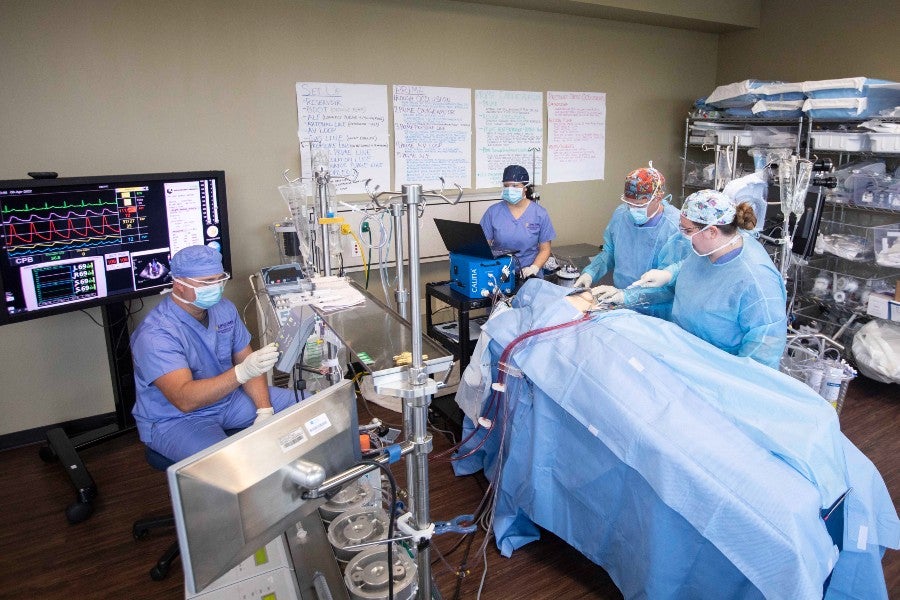Perfusion students and faculty test optimal transit time for cardiac drugs
Sometimes it only takes one question to open a door to undiscovered knowledge.
Janel Shoun-Smith |

When one student asked Christopher Yann, then at Vanderbilt University, a question he couldn’t answer about drug transit times from the extracorporeal circuit to the patient during cardiac surgery, he said, “Well, let’s just go down to the lab and try it out.”
They did, and it turned out that the answer wasn’t simple to determine and there isn’t much current data available. After coming to Lipscomb as the simulation coordinator for the School of Cardiovascular Perfusion, he decided to carry out experiments using dye and Lipscomb’s perfusion simulation equipment, to better determine how quickly drugs take effect in a patient during cardiac surgery, depending on the injection point.
As the experiments progressed, Lipscomb’s College of Pharmacy came on board as a partner with Yann and his students, McKenzie Bangasser and Josie Anderson, both of the Class of 2023, providing the use of a photo spectrometer so they could use the real drugs in the cardiopulmonary bypass circuit and measure the transit time from different injection points more accurately.
“Through these experiments, we can get a feel for what a perfusionist should do during a surgery if he or she wants a drug to reach a patient at a specific time to counteract potential damage to the heart,” said Yann.
The interdisciplinary nature of the research project brings home to students how important it is to be familiar with the role every person in the operating room is playing, said Yann. “Communication is our lifeblood in the operating room. If we are not on the same team, we are in trouble.”
Perfusion students Daniel Nicks and Samantha Mullvain, both of the Class 2024, are expected to continue the study over the course of the next school year.
“This study looks like it has a very good possibility of impacting the profession, so I jumped at the opportunity to research it with Professor Yann and my fellow students,” said Nicks, of Northridge, California. “I believe this research will result in the best patient care possible by ensuring rapid administration of the drugs to the patient.”